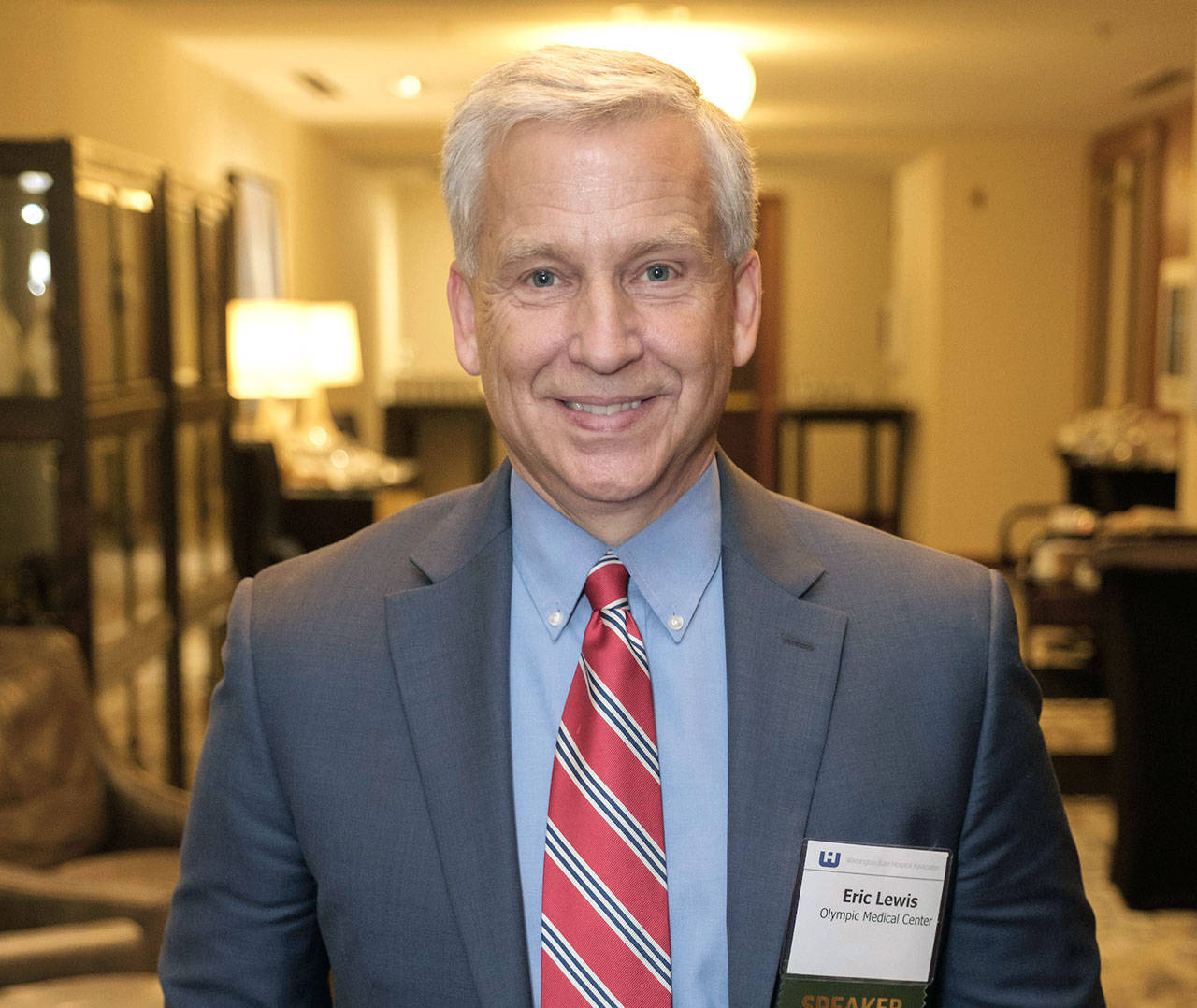PORT ANGELES — A $1.9 million state appropriation will ensure that Olympic Medical Center will hire 15 new medical providers this year, including up to six new primary care doctors to serve its mainly rural population.
The new hires will work out of OMC facilities in Port Angeles at Eighth Street and the hospital’s new medical office building, and at the hospital district’s Sequim facilities, where 13 exam rooms will be added to the Fifth Street primary care clinic, said Eric Lewis, hospital CEO.
The funding for July 1, 2018, through June 30, 2019 will increase outpatient Medicaid reimbursement at OMC from 125 percent of the fee schedule to 150 percent, Lewis and 24th District state Rep. Steve Tharinger said in interviews last week and Monday.
The funding also will increase coverage of Medicaid outpatient-service costs from 65 percent to 80 percent.
Grays Harbor Community Hospital in Aberdeen, which was in danger of closing, will receive $3.4 million as part of the increase in Medicaid reimbursement, Tharinger said.
OMC will receive the funding as part of the biennial budget state lawmakers approved earlier this year to improve the community’s access to primary care and maintain Level 3 trauma emergency services.
The 15 new positions will include an as yet undetermined number of physicians, and advanced practice clinicians, which include advanced registered nurse practitioners and physician assistants.
They will be hired in a “collaborative care model” that will include participation with the North Olympic Healthcare Network and the Jamestown S’Klallam Tribe, Lewis said.
“We’re looking at expanded care teams which will provide better access and I think high-quality care,” Lewis said.
“We are trying to get a more sustainable model that focuses on wellness and prevention.”
Unlike in 2016, OMC absorbed a $2.5 million loss in 2017, said Lewis.
“My board looked at me and said we can’t keep hiring people we can’t pay for.
“We are wanting to be here for the next 20 years and beyond.
“We want to make small [profit] margins, then invest in equipment and people.”
Tharinger said OMC may not need the Medicaid reimbursement boost after June 30, 2019.
“If we need to make a 150 percent reimbursement rate to keep OMC moving on this pathway, we will do that,” he said.
Of the $5.3 million going to both hospitals, $1.4 million is state funds and $3.9 is federal funds.
Just 17 percent of OMC patients have commercial insurance, unlike Seattle, where the percentage is about 40 percent-50 percent, Lewis said.
Hospitals with high commercial insurance patients can cover the Medicaid reimbursement gap, Tharinger said Monday.
OMC does not have that cushion, making the Medicaid reimbursement issue all that more acute for OMC, Tharinger said.
“This really helps OMC to stabilize and allows us to expand primary care access,” Lewis said.
“The biggest thing patents will feel is we are going to recruit more primary-care doctors and we are going to address the primary care shortage.
“We want people to have shorter wait times.
“We want to expand primary care so people go to primary care rather than the emergency department.”
He said it allows the maintenance of Level 3 trauma care, which provides 24-hour emergency-medicine physicians, general surgery and anesthesia and includes transfer agreements to more advanced facilities for patients who require more comprehensive Level 1 and 2 care.
“It will cover our variable costs, so I think it’s very helpful,” Lewis added.
“It’s a bridge to the future, not the future.”
For OMC, the funding provides a continuation of “the transition to wellness instead of fee for service,” said Tharinger, who is seeking re-election to a region that includes Clallam and Jefferson counties and the northern half of Grays Harbor County.
“You basically create a healthy community by providing primary care and access to services.”
“The other thing is to keep this a community hospital so it’s not absorbed into a Swedish [Medical Center],” Tharinger said.
He was referring to the largest health care provider in the Seattle area, which is affiliated with Providence Health & Services, which operates 34 hospitals across five states.
“[OMC] is a community hospital,” Tharinger said.
“To not be absorbed, to keep it a community hospital managed by a local board … you’ve got to be financially viable.”
________
Senior Staff Writer Paul Gottlieb can be reached at 360-452-2345, ext. 55650, or at pgottlieb@peninsuladailynews.com.

